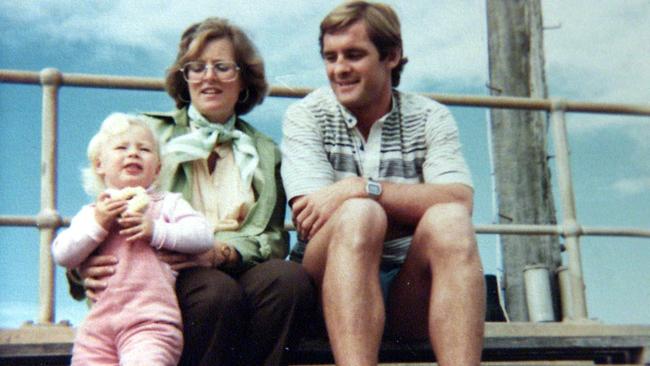Teacher’s Pet podcasts: different stories in Lyn Dawson’s disappearance
Glaring contradictions between two statements given to police about Lyn Dawson’s disappearance were not acted on by officers.

Glaring contradictions between two handwritten statements given at the same time to police — one from Lyn Dawson’s mother and the other from her husband — were not acted on by NSW officers, who filed her disappearance as an unsuspicious missing person case.
In August 1982, seven months after Lyn vanished from Bayview on Sydney’s northern beaches, her mother Helena Simms told police that she blamed her daughter’s marriage problems on the presence of a teenage girl.
“My daughter had become uptight and very tense over the latter months of last year,” Mrs Simms wrote in a statement.
“She and her husband had struck a bumpy patch in their marriage and partnership of 17 years, complicated by the taking in of a teenage student seeking help. She had babysat for them. My darling Lyn offered her hospitality in good faith, which she later regretted when she caused her much anguish.”
Mrs Simms did not accuse her son-in-law of foul play at the time, and would not do so until years later. But her statement conflicted with a statement Mr Dawson gave to police just days earlier, in which he blamed his marriage difficulties on Lyn’s credit card spending.
Both statements will be examined in a new episode of The Australian’s investigative podcast series The Teacher’s Pet, released tomorrow.
They were provided to police at a time when Lyn was being treated as a runaway mother.
When his wife went missing, the former Newtown Jets rugby league star was in a sexual relationship with the teenager Mrs Simms was referring to, Joanne Curtis. The affair had begun 14 months earlier when Ms Curtis was a 16-year-old Year 11 student at Cromer High, where Mr Dawson was a physical education teacher.
In his signed 1982 statement, Mr Dawson failed to make any mention of his relationship with the teenager. “Lyn and I had been having marital problems for approx. 2 years, mainly over her Bankcard spending and financial matters in general,” he wrote.
Two days after Lyn disappeared, Ms Curtis moved into the home. She became stepmother to his two daughters, aged four and two, and they later married.
It was eight years before Sydney homicide detectives started looking at the case, in 1990, acting on information from Ms Curtis. Former NSW homicide detective Stuart Wilkins has said Mr Dawson’s celebrity status may have helped him avoid police scrutiny initially.
Mr Dawson had connections to senior police through rugby league and wrote in his 1982 statement that a Manly detective was “advising me on procedure”.
A retired judge, who has more than 50 years’ experience in the law but asked for anonymity, yesterday said there “should certainly have been an investigation” when Lyn went missing.
“The relationship with the police and the footballer is something that ought to be pursued,” he said. “They need to investigate to whom the report was made and anyone up the line that said yes or no to a suggestion that there be further inquiries or the matter be accepted on face value.
“Even a very perfunctory police inquiry would have suggested that his story was untrue. The new girl in the house and the subsequent marriage would have rung very large alarm bells.”
Two coroners found, in 2001 and 2003, that Lyn was murdered by her husband, but the NSW Director of Public Prosecutions has always maintained there is not enough evidence to prosecute. Mr Dawson strenuously denies killing his wife.
Do you know more about this story? Contact thomash@theaustralian.com.au


